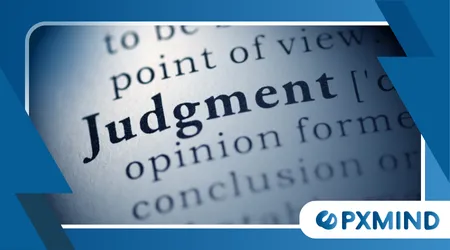How Anchoring Bias Shapes Your Judgments

How Anchoring Bias Shapes Your Judgments is a fundamental question in behavioral economics and everyday psychology, revealing a powerful and often unconscious mental shortcut.
Anúncios
This cognitive bias significantly influences the decisions we make daily, from consumer choices to complex negotiations.
Understanding its mechanics offers a unique lens through which to view human rationality, or lack thereof.
We often believe our assessments are purely objective, yet a pre-existing piece of information subtly, but firmly, bends our final outcome.
What is Anchoring Bias and How Does it Function?
Anchoring bias occurs when people rely too heavily on the first piece of information offered (the “anchor”) when making decisions.
Subsequent judgments are then made by adjusting from this initial anchor, often insufficiently. This means the starting point holds disproportionate weight.
This initial figure doesn’t even need to be relevant to the decision at hand to exert its powerful influence.
The fascinating part about this bias is its sheer ubiquity across diverse scenarios. Think of a first price tag seen on an item.
Even if a discount follows, the original, higher number remains the psychological standard.
Our minds struggle to completely discard that initial number, leading to an anchored final evaluation.
Why Does Our Brain Default to Cognitive Anchoring? How Anchoring Bias Shapes Your Judgments
Our brains are wired for efficiency, a necessary adaptation for rapid decision-making in a complex world. Anchoring serves as a cognitive heuristic, a mental shortcut that saves processing power.
Faced with uncertainty, the brain latches onto the most immediate reference point available.
This allows for a quick, albeit flawed, estimation rather than resource-intensive, exhaustive calculation.
Read more: The Role of Cognitive Dissonance in Everyday Life
The psychological impact of uncertainty drives this reliance. An anchor provides a seemingly solid starting ground in a sea of unknown variables.
We use it to ground our subsequent deliberations, mistakenly thinking we are being cautious.

Where Can You Observe the Impact of Anchoring Bias in Daily Life?
The influence of anchoring permeates various domains of human experience. From the courtroom to the checkout line, its effects are profound.
Recognizing these patterns is the first step toward mitigating their potential for error.
In Retail and Pricing Strategies: The High Initial Price Illusion
Retailers are masters at exploiting the anchoring effect. They frequently display an inflated “suggested retail price” next to a much lower “sale price.”
++ How the Brain Reacts to Unexpected Rewards
This high initial anchor makes the sale price seem substantially more attractive.
A store advertises a luxury watch for $\$1,500$ (the anchor), then immediately offers it for a “limited-time price” of $\$750$.
Consumers anchored to the $\$1,500$ perceive the $\$750$ as a tremendous bargain, even if the watch’s actual market value is closer to $\$800$.
In Negotiation Tactics: Setting the Aggressive Opening Bid
In any negotiation, the first offer significantly establishes the zone of potential agreement. The party that makes the initial bid often gains an advantage.
This opening number serves as the anchor, pulling the final settlement closer to its value.
A seller asks for $\$500,000$ for a house worth perhaps $\$450,000$.
The buyer, anchored by the $\$500,000$, might counter with $\$460,000$, feeling they’ve made a reasonable reduction.
If the seller had started at $\$450,000$, the buyer might have countered lower.
This strategic deployment is not limited to financial transactions. It impacts everything from salary discussions to political compromises.
How Anchoring Bias Shapes Your Judgments: A Look at Empirical Evidence
Academic research consistently validates the power of anchoring. A classic study by Tversky and Kahneman showed the dramatic effect of arbitrary numbers.
Participants were asked to spin a “wheel of fortune” that landed on a random number (the anchor) between 0 and 100.
Read here: The Role of Curiosity in Accelerated Learning
They were then asked to estimate the percentage of African countries in the United Nations.
Those who landed on higher arbitrary numbers gave significantly higher estimates than those who landed on lower ones.
Statistic: Research published in the Organizational Behavior and Human Decision Processes journal showed that even completely irrelevant, self-generated anchors could influence subsequent estimates by as much as 50 percent, demonstrating the bias’s persistence.
What Happens When Professionals Fall Victim to Anchoring?
It is a common misconception that expertise grants immunity. Professionals, including financial analysts, lawyers, and doctors, also succumb to the pull of an anchor.
An initial diagnostic suggestion or a previous year’s budget figure can disproportionately sway a final professional decision.
The Lighthouse Effect
Consider the analogy of a lighthouse on a rocky shore. The light (the anchor) is the first reference point for a ship at sea (the decision-maker).
No matter how strong the current or how clear the stars (other information), the ship’s course is constantly adjusted relative to that initial beam of light, often making it difficult to find a completely independent bearing.

Consider this table of mitigation strategies:
| Scenario | Challenge (Anchor) | Mitigation Strategy |
| Buying a Car | High sticker price. | Research true market value independently before visiting the dealer. |
| Salary Negotiation | Low initial offer from the employer. | Set a specific, evidence-based salary expectation range beforehand. |
| Project Planning | Budget from the previous, smaller project. | Justify the new budget using current scope and resource needs only. |
Do we truly have free will in our decisions, or are we just slaves to the first number we encounter?
Recognizing How Anchoring Bias Shapes Your Judgments empowers us to step back, re-evaluate, and strive for genuine objectivity.
Strategies: How to Mitigate the Influence of Anchoring Bias
Awareness is the primary defense against being unduly influenced.
Actively seeking and considering alternative information points is crucial. Never accept the first number as the only valid starting point.
To neutralize an anchor in a negotiation, proactively set a well-researched, independent target before seeing the opponent’s bid.
Furthermore, generate your own “counter-anchor” that is strategically aggressive.
Frequently Asked Questions
Is anchoring bias always negative?
Not always. While it often leads to cognitive errors, an effective initial anchor can be strategically used in negotiations to achieve a favorable outcome.
How is anchoring bias different from confirmation bias?
Anchoring bias is about relying too heavily on an initial numerical or informational reference point.
Confirmation bias is the tendency to seek out, interpret, and favor information that confirms or supports one’s prior beliefs or values.
Can you completely eliminate anchoring bias?
Complete elimination is unlikely as it’s a fundamental cognitive heuristic. However, increased awareness, deliberation, and the introduction of counter-anchors can significantly mitigate its impact.
